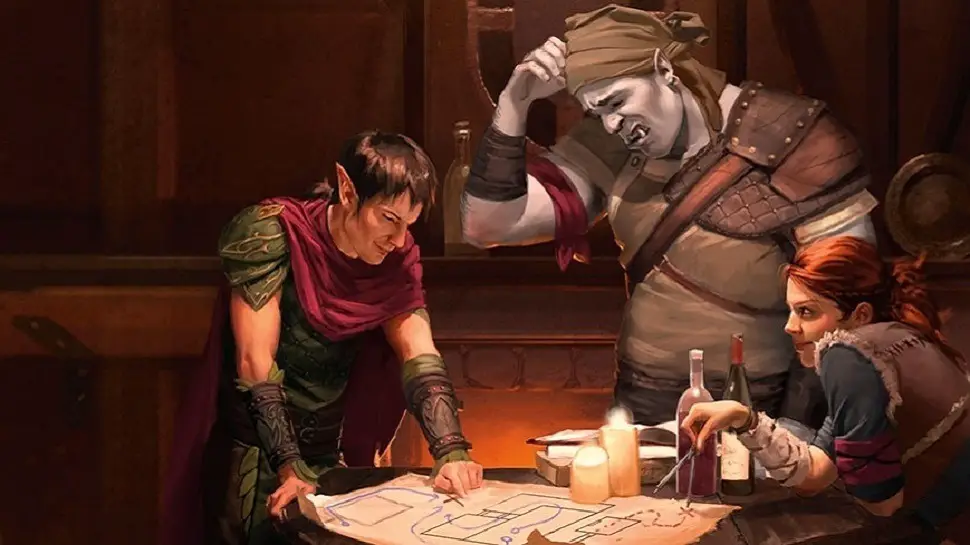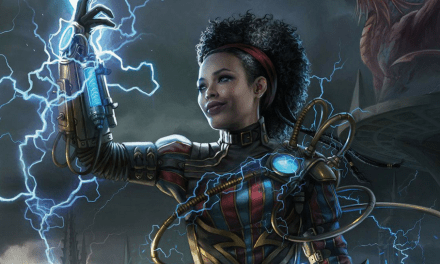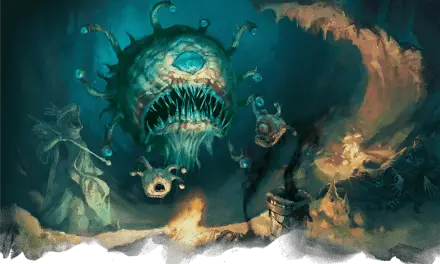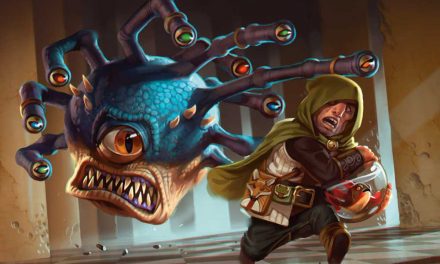Beyond the base rules of Dungeons & Dragons 5e, many tables commonly use optional and homebrew rules. These rules can be great for helping players get exactly the type of experience from their game that they want.
Of course, your group will want to discuss using these rules beforehand in Session Zero where everyone is establishing what kind of game is being played. A casual group that just wants to roll dice, fight some monsters, and enjoy some snacks likely won’t appreciate homebrew rules that add more gritty realism to the game.
Remember: always discuss rule variations before starting your campaign!
With that said, let’s go ahead and dive into 10 Optional Homebrew Rules for D&D 5e!
Optional Rule #1: Free Bonus Feat at First Level
Getting an extra feat at first level is seriously powerful. Typically, players have to choose between a feat or two ability points every four levels. Because many of the feats in D&D 5e are freaking awesome (to use the technical term), it’s a bit of a tough choice!
Do you want your barbarian to get the Great Weapon Master to deal out extra punishment or boost their strength so that they’ve got a better chance of hitting?
This choice makes Human (variant) especially appealing because they get a bonus feat at first level. More often than not, feats are where your players’ character concepts really come to life.
So with this homebrew rule, everybody gets a bonus feat at first level. (Yes, even the variant Humans who now get TWO feats!)
This helps players better build the character that they want right out of the gate. Not having to sacrifice ability score improvements for must-have feats like Great Weapon Master, Sentinel, or War Caster is just a great feeling.
Curiously, though, this homebrew rule also incentivizes players to look at feats that don’t get chosen as often. Feats like Actor, Observant, or Keen Mind can be useful and really add to the roleplaying side of D&D. But when you have to choose between that and options that are more geared towards helping keep you alive…
Optional Rule #2: Healing Potions Only Take a Bonus Action
Rules-as-Written (or RAW), healing potions feel like they add insult to injury.
Your character just took an awful beatdown from whatever they’re fighting and now has to spend their next turn… just drinking a potion?
That’s underwhelming and can instantly suck the fun out of a combat for players. Healing or not, it still feels like losing a turn.
So this homebrew rule reduces the time to drink a healing potion down to a bonus action. That way you can heal yourself up real quick and get right back to taking on the enemy.
It keeps combat moving, engaging, and fun.
For the sake of balance, this only applies to healing potions that the character drinks themselves. Giving the potion to a downed ally or drinking a different (not-healing) potion still count as actions.
Optional Rule #3: The DM Rolls in the Open
I need to start this explanation with a minor rant:
If death is on the line, the Dungeon Master should never, ever roll behind the screen.
On the same note, if you’re rolling behind a screen, it’s in good taste to show a natural 20 roll to your players before you roll up critical damage.
Some DMs like Jacob from XPtoLevel3 and Luke from The DM Lair prefer to make death saves in secret.
I totally understand their point that it adds a great sense of tension and urgency to the situation. However, in my experience, a player is far more accepting of their character dying if they rolled the dice themselves.
Tension and a sense of urgency are great, but they are already present as the character is downed. Tension and urgency are no reason to risk a player’s hurt feelings and a sense of having no control in an outcome.
However, I will agree that rolling secret death saves can be great for adding roleplay immersion with one caveat: your players must still be able to have fun and fully trust you as an impartial DM for these to work.
If that trust isn’t there, don’t do it. Your time is better spent building that trust and telling an awesome story together.
With that said, some groups like to completely remove the ability of a Dungeon Master to fudge a roll behind their DM screen. The concept of letting the dice roll as they may is great for embracing the chaotic nature of rolling dice in D&D.
But it’s a double-edged sword.
Just like the DM isn’t able to fudge dice to increase the challenge for players, they aren’t able to fudge dice to help them either.
Not that the DM should make a habit of fudging the dice in the first place, mind you.
Optional Rule #4: Flanking
So your party is currently fighting an enemy and your fighter is currently squaring up to them. On your turn, you move into the square on the other side of this enemy. Now you’re getting them from both sides which means that they are being flanked.
In previous editions of Dungeons & Dragons, flanking gave extra bonuses to your attacks. However, in the streamlined system of D&D 5e, situations don’t add modifiers anymore. Instead, attacks are at advantage, disadvantage, or normal.
Flanking rules in 5e give advantage to characters that are flanking an enemy. (Though, be warned! This rule can also be used against the player’s characters!)
To be honest, I really don’t like flanking rules in 5e.
It quickly lends itself to characters seemingly always having advantage which is supposed to be fairly difficult to achieve. The use of spells like Guiding Bolt or Faerie Fire becomes mostly pointless if the go-to tactic of “just stand on either side of that guy” is already giving advantage.
But some people, especially those who come to 5e from older editions, really like flanking.
To this, I think it’s more useful to incorporate some small but helpful attack bonuses for flanking.
Even something as seemingly small as a +1 or +2 bonus rewards characters for maneuvering well and flanking the opponents.
Advantage is a MASSIVE bonus and giving it to characters as a flanking bonus can quickly throw off the challenge rating for encounters.
Optional Rule #5: Massive Damage
Sometimes a character takes a terrifying amount of damage from an enemy. Your fighter is standing up to an ogre and holding their own until… did that ogre just crit?
Did it just roll max damage?
“What have we done?!” one of your party members scream as this particularly angry ogre unleashes on the poor fighter.
With Massive Damage rules, a character that takes half of their maximum hit points or more in damage from a single source may suffer more than just the damage.
The character makes a DC 15 Constitution saving throw. If they fail, a d10 is rolled to determine what awful effect occurs.
On a roll of 1, the character drops to 0 hit points and has to start making death saving throws.
Roll a 2 or 3, the character is at 0 hit points but is stable.
4-5, the character is stunned until their next turn.
6-7, the character can’t take reactions and has disadvantage on attack rolls and ability checks until their next turn.
On an 8 or higher, the character can’t take reactions until their next turn.
This optional rule works best in groups that want to add gritty realism and extra challenge to their game.
While it’s totally possible for level-appropriate encounters to trigger this rule, it especially serves to punish adventurers who are fighting enemies above their level.
Optional Rule #6: Zero HP and Exhaustion
This rule is meant to overcome Boomeranging. Boomeranging is the cycle of a character dropping to 0 HP, getting healed, then getting knocked back to 0 HP.
In D&D 5e, there’s no real downside to Boomeranging beyond using spells or potions to pick the character back up. It can be awkward at best and downright frustrating at worse.
Using this rule, a character that is knocked to 0 HP gains a level of exhaustion. Even if they are picked back up with a healing effect or by succeeding on their death saving throws, they’re not back in tip-top shape. There are still lingering consequences to falling to 0 HP and they’ll need to catch a rest to fully recover.
Alternatively, characters may suffer a level of exhaustion each time they make a death saving throw. This version of the rule ups the stakes and can be absolutely brutal.
If a character gets back up by making three successful death saves, they have three exhaustion levels. This means that they have disadvantage on attack rolls, ability checks, and saving throws in addition to having their speed halved.
If a character rolls two failures and three successes to get back up from being unconscious, they are one level of exhaustion away from death.
If your group wants a brutal, punishing experience, the alternative rule may be up your alley. Otherwise, I’m a big fan of the first version of this rule!
To read more about what happens when a character drops to 0 hit points, check out this article!
Optional Rule #7: Modified Critical Hits
There’s a very distinct feeling that is just as crushing as it is rare.
You roll a natural 20 on your attack roll. Crit!
You’re excited and can’t help but grin from ear to ear as you prepare to roll twice the dice. This monster is about to get wrecked. Your party is all cheering. Let’s do this!
You roll and…
Oh… You rolled all ones…
But, hey, at least you still add that skill modifier?
With a defeated sigh from everyone at the table, you deal critically minimum damage.
I’m not sure if there’s a specific word for this feeling, but there should be.
With the Modified Critical Hits rule, you avoid this painfully awkward situation.
When an attacker scores a critical hit, they roll the normal amount of damage. This number is then added to the maximum potential damage of the dice plus modifiers.
Total = Rolled Damage + Max Damage + Modifiers
So scoring a critical hit with a one-handed longsword, for example would look like:
Total = 6 + 8 + 4 = 18 Damage
Without this rule and strictly just rolling double the amount of dice, it’s possible that this would have only dealt 6 damage.
Optional Rule #8: Lingering Injuries
Adding to the rule options for groups who want to capture a feeling of gritty realism, we have Lingering Injuries.
It’s up to the Dungeon Master when these injuries occur.
Commonly, they happen when a character drops to 0 hit points or massively fails a death saving throw. But, they may also occur upon taking a critical hit, suffering Massive Damage (listed above), or as an effect of a trap.
The Dungeon Master’s Guide contains a table of suggested Lingering Injuries on page 272. But the DM is free to change the table or effects as they deem appropriate.
Using this rule increases the difficulty of the game by adding more realism. But it also brings out some interesting aspects of healing magic that are often neglected. Spells like Regenerate also cause body parts to reattach or grow back, which can make them particularly useful.
Optional Rule #9: Fumbles On Critical Misses
When attacking, rolling a natural 20 means you deal a critical hit.
But what about rolling a natural 1?
This is where the popular “Fumble” rule comes in.
In short, on a roll of natural 1, bad stuff happens.
The attack may accidentally hit an ally, cause the attacker to drop their weapon, or other such bad effect.
These fumbles should be balanced and inconvenient, so the DM may want to build their own Fumble chart. If you’re spending the time to do this, you should make charts for Melee, Ranged, Thrown, and Spell attacks.
For inspiration, you may want to check out these Critical Fumble Tables by Hipsters & Dragons.
Optional Rule #10: Inspiration Stacking
I’m a huge fan of the Inspiration mechanic in D&D 5e. Rewarding characters for effective roleplaying is a great way to get players to really “buy in” to the world that is being created. This means they’ll make more interesting decisions, interact with the world more, and find creative solutions to problems.
But in the standard rules, Inspiration is something that you either have or don’t. This means that it can be difficult to determine when is a good time to cash in your Inspiration.
More often than not, I see players hold on to their Inspiration waiting for that perfect moment. But if they already have Inspiration, they can’t be rewarded for good roleplaying until they’ve used it.
With Inspiration stacking, players can get multiple Inspiration counters. This makes Inspiration much easier to come by and use for the characters. Because of this, they’ll actively engage in more roleplay to acquire more Inspiration.
Personally, I’m a fan of setting a limit of 3 Inspiration points.
Having a limit means that a character approaching 3 Inspiration points will likely go ahead and use one so that they don’t miss out on future Inspiration rewards.
Likewise, it stops a character from banking their Inspiration to unleash 20 Inspiration counters in what should be a hopefully challenging boss fight.
Optional Rules Conclusion
There are countless optional and homebrew rules out there. Over time, your group may come to adopt several of these rule variations to create the perfect game for all of your players. Don’t be afraid to talk with your group and experiment with rules that you think will add to your game.
What are some homebrew rules that you like?
Want to see another article discussion even more optional homebrew rules for D&D 5e?
Let me know in the comments!









